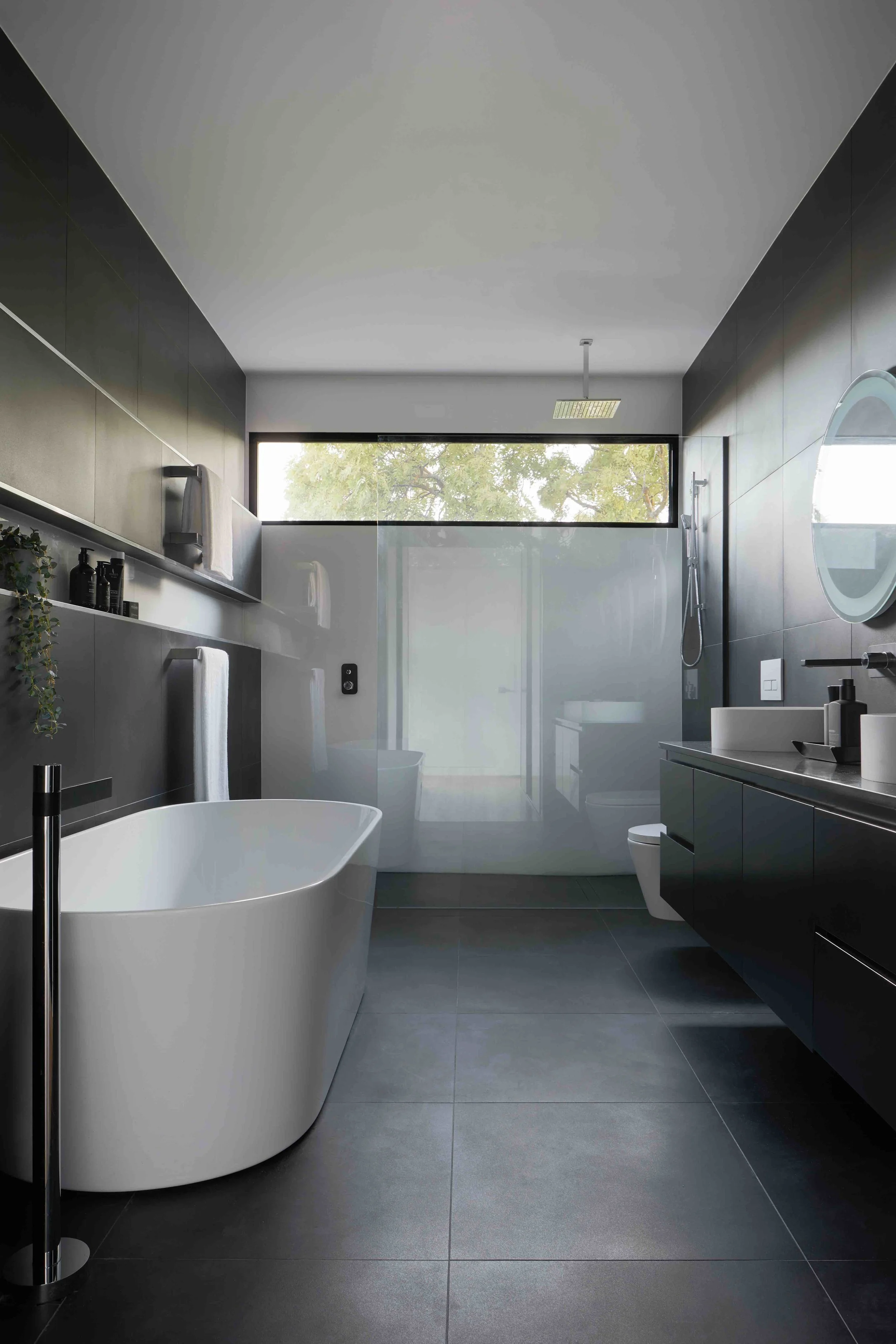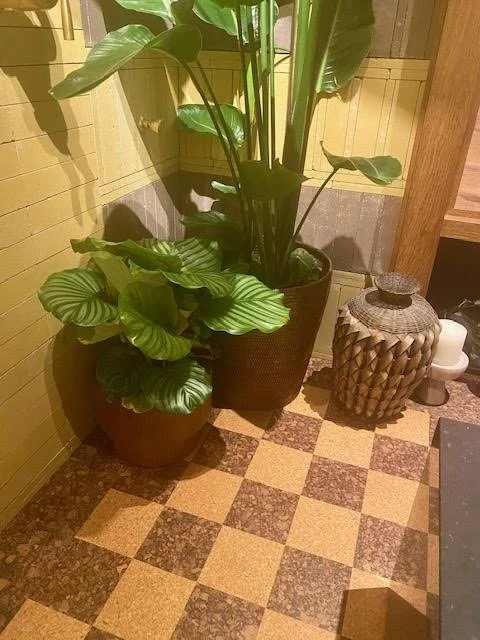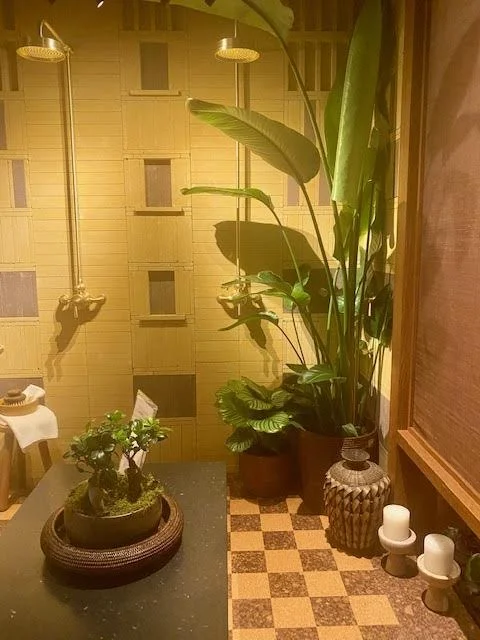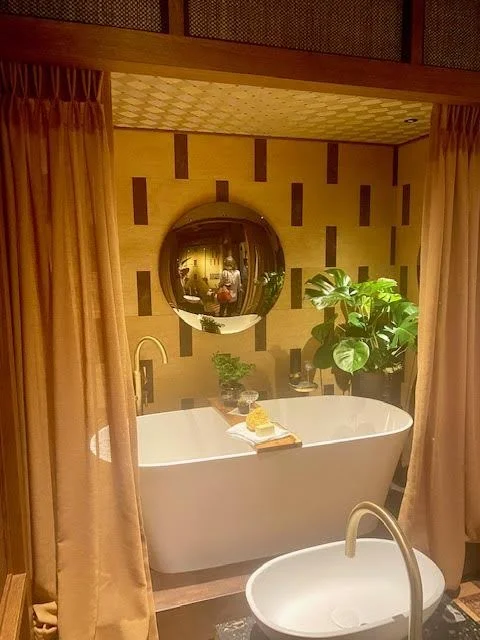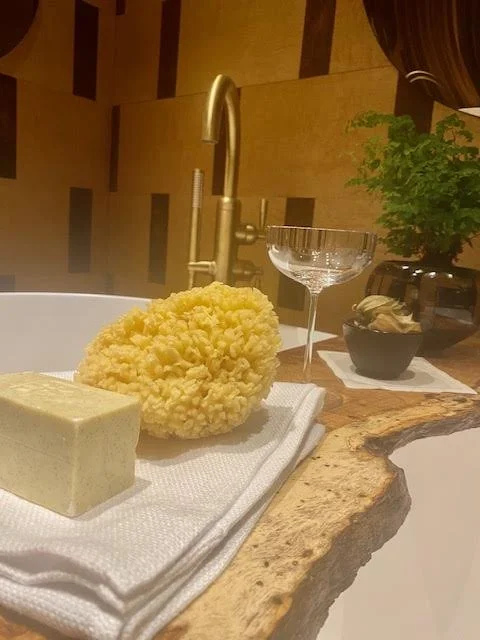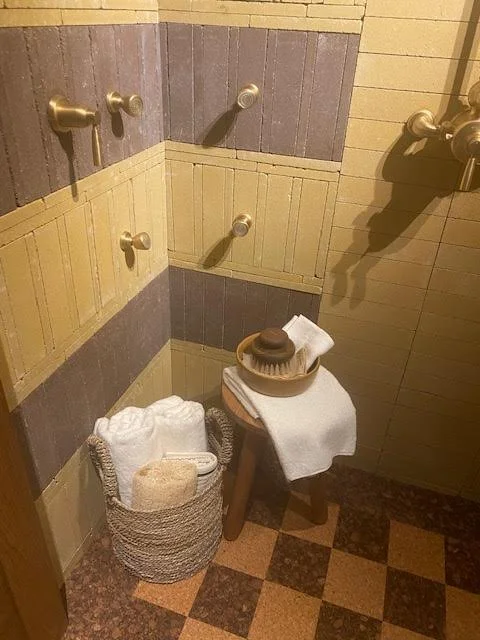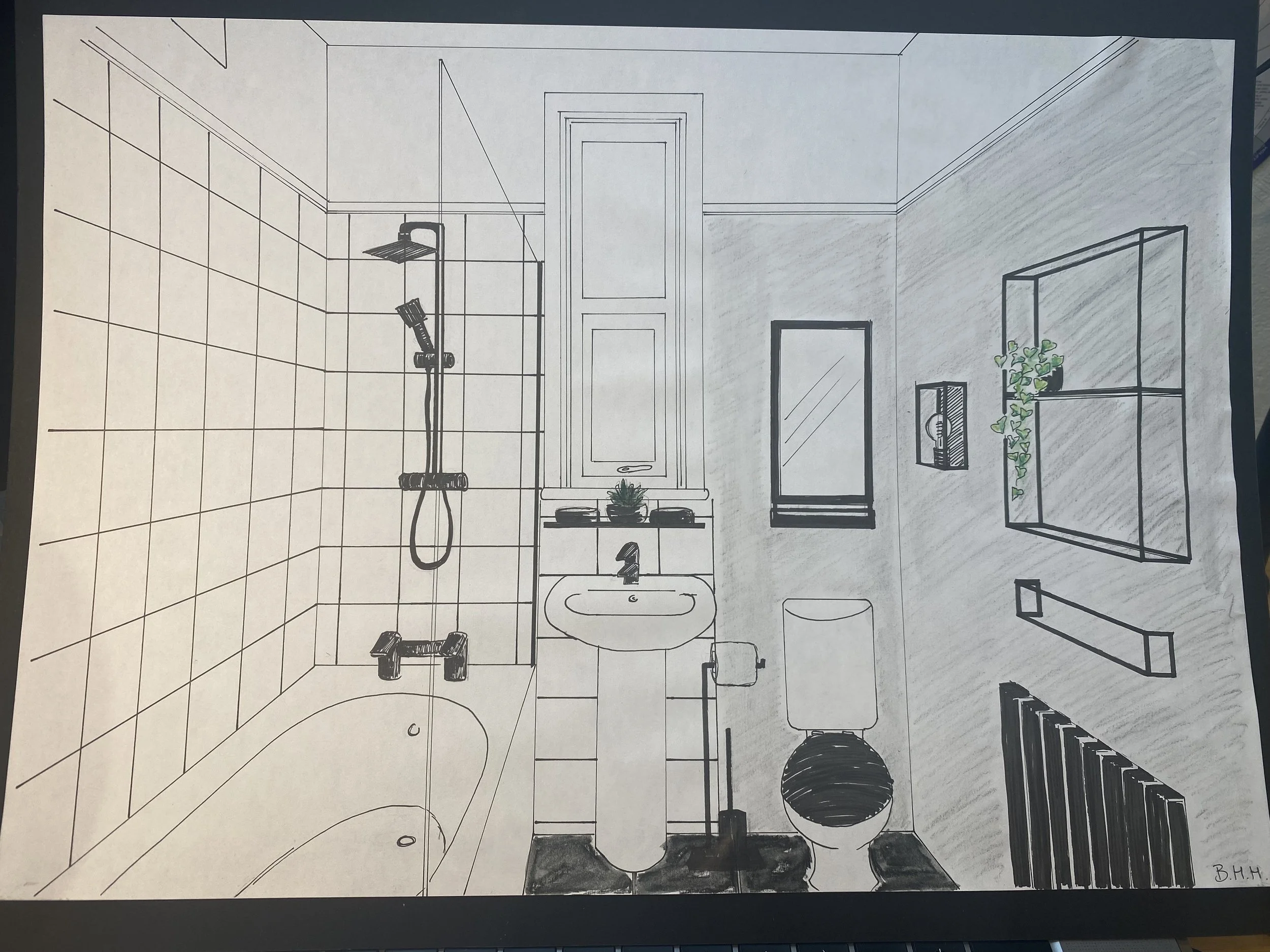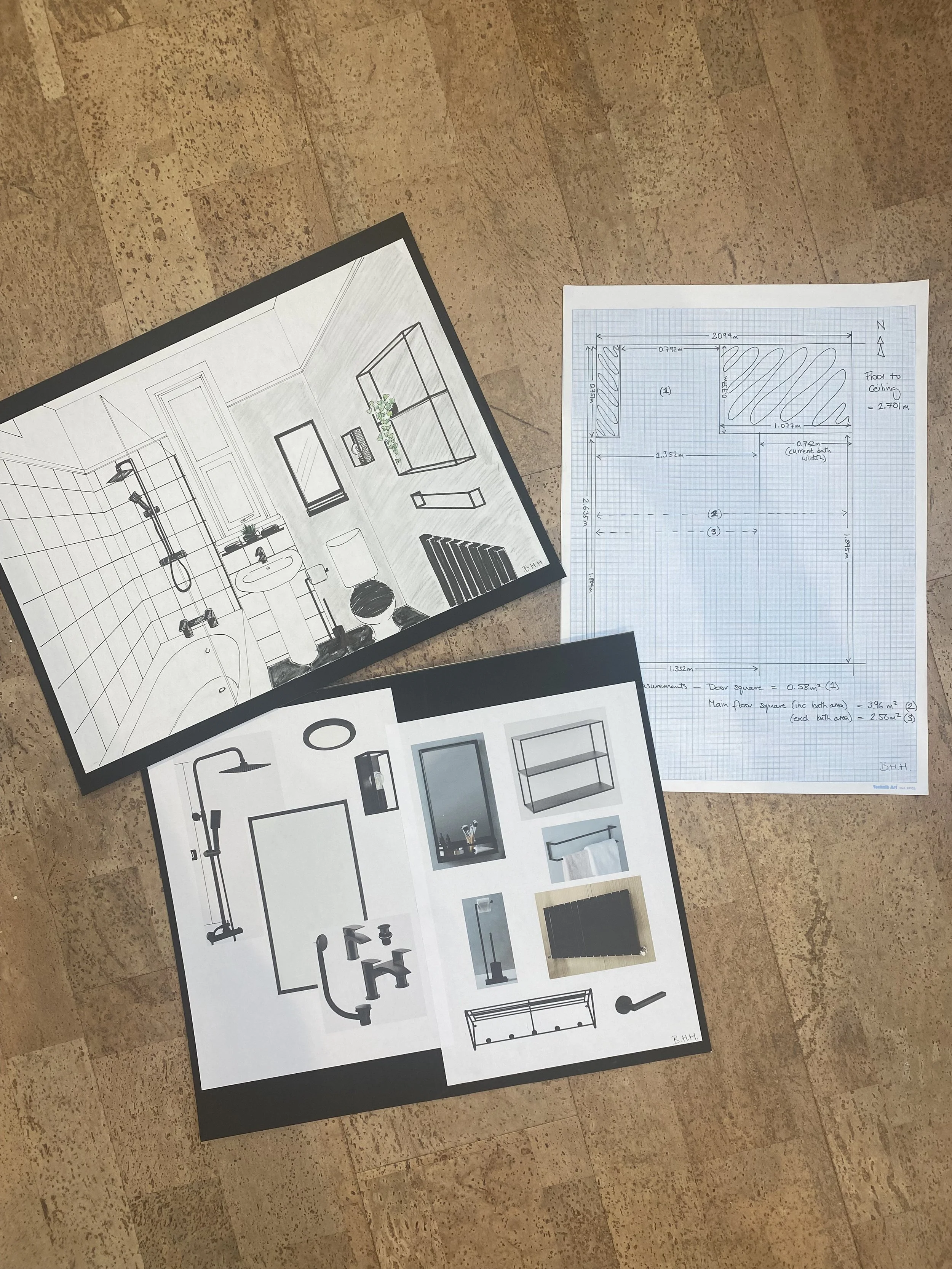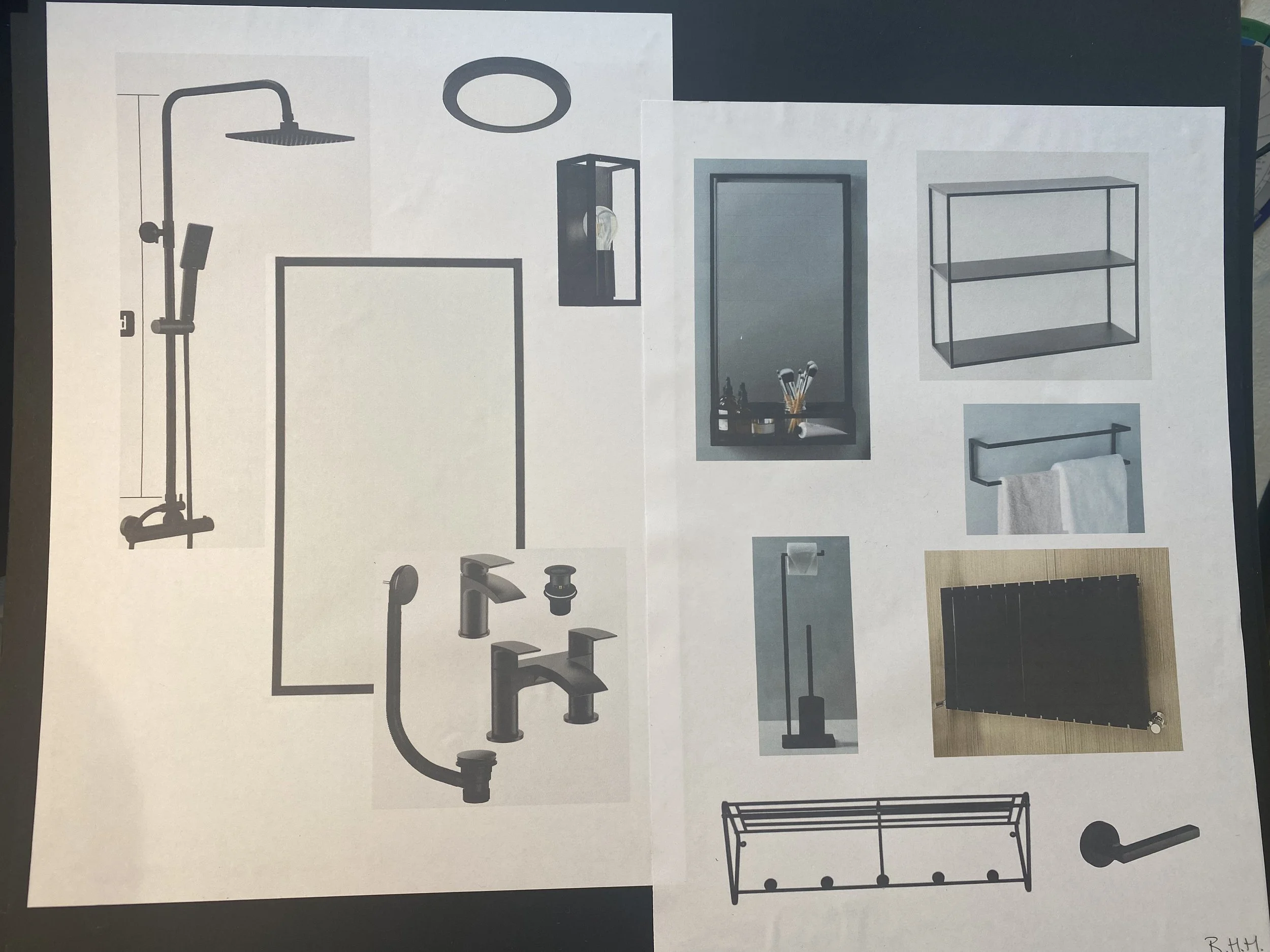Healthy Design for Bathroom series 4/4: Flooring
Hello and welcome to the final instalment of my Healthy Design for Bathroom series where I am looking at….
FLOORING
So what healthy options are there!? The basic rule of thumb is that the more natural the flooring the better. However, as we are looking at bathrooms, there is a need for a floor that does not have the property to absorb water - that’s why carpets in a bathroom are very much a no-no. There are waterproof floors and water-resistant floors. Which is the most suitable for your bathroom depends on how you intend to use the space, what kind of budget you have and the look you’d like to achieve. A quality floor made from a natural material will last longer, it may add value to your property and it won’t add airborne toxic chemicals (VOCs) to your home environment. A healthy floor is particularly important for children as they are closer to the ground and often spend time crawling and playing on it.
TILES - water resistant, can be waterproof, healthy and an investment
There are three types of tiles: porcelain, ceramic and natural stone (think marble, granite, limestone and slate as some examples). Porcelain and ceramic are made in the same way however the former is far more hard wearing as it is produced using a different type of clay and then fired at a higher temperature. The production of tiles can be quite a hazardous process and there can be various heavy metals and toxic chemicals involved, however, it appears that once the tiles have been fired and glazed they are deemed safe for flooring. I could not find any specific information on potential toxicity or off-gassing on floor tiles. That doesn’t mean they are inert, however, it does appear they are safer than other options such as vinyl or laminate where toxic chemicals are regularly off-gassing from them. You can opt for safer environmentally friendly grouting too. There are also lots of new tile products on the market made with recycled content - check out Johnson tiles made in the UK.
PORCELAIN TILED WET ROOM FLOORING - healthy and waterproof, an investment
I chose to have a wet room floor in the ensuite below as the space was small and I wanted the design of the tiles to flow wall-to-wall. This means that below the tiles is a ‘tilesafe’ or ‘tilesure’ tanking membrane to keep the area water tight. The tiled floor is raised slightly with a layer of chipboard that slopes gradually towards the shower waste. As the tiles below were large tiles (45 x 45cm) they needed to be installed with an envelope cut so they would run neatly towards the waste in the centre of the shower area. Having the whole bathroom floor waterproofed in this way means you can splash from the shower or step out of the shower wet without worrying about water seeping below and damaging the internal flooring structure.
If choosing a wet room option, be sure to use porcelain tiles and that it states on the product description they are suitable for wet room use. A wet room floor using tanking membrane and porcelain tiles is the healthiest way to create a waterproof flooring. Although it will be slightly more expensive than say vinyl flooring, it is a good investment, because if installed correctly, it will do a good job of protecting your sub floor and you instantly have a more luxurious and spa like shower room which can then add value to your property. These Moroccan Star porcelain tiles have a high slip resistance, matt finish, are suitable for wet rooms and contain recycled content.
CORK FLOORING - water resistant, healthy, anti-bacterial and affordable
If you are keen on a healthy flooring but porcelain tiles are out of your budget then it is worth considering a cork flooring. Cork flooring is a gorgeous natural material that is also very environmentally friendly. Cork is warm under foot, antibacterial, hardwearing and easy to keep clean. Cork is naturally water resistant and can be used in a bathroom for flooring but do check on the product description. Flooring by Nature has very reasonably priced cork tile suitable for bathrooms. Shop here.
If you want to go for cork planks be sure that the core of the plank is cork too as that will withstand the humidity levels in the bathroom. Some planks have a compressed wood core which are not suitable. Again always check the product description and ask if it is not clear.
Planks will have been sealed already so are good to go once lain, however they will need to be resealed over time. Cork tiles are often left in their raw state and therefore need sealing once they have been installed in a bathroom. The traditional method was polyurethane but this can be high in VOCs and the oil-based one can yellow over time. A water-based one is preferable or a wax which can be a healthier choice, you would just need to re-wax every 12 months or so.
“ Cork is the harvested bark of the Cork Oak tree, native to the Mediterranean. Harvesting doesn't harm the tree and each tree can be harvested 15-20 times in it's lifetime. Once the Cork Oak has been stripped, it will absorb 5 times more CO2 in its natural regeneration cycle than an un-stripped cork. This means some of our cork flooring is actually climate positive! Cork flooring is entirely plastic free, a natural thermal insulator and naturally anti-microbial.” Flooring By Nature
Photos of ‘Flooring By Nature’s’ beautiful checked bathroom cork floor, taken at the WOWHouse2023, Chelsea Harbour.
WOODEN FLOORS - with the right finish can be water resistant, healthy and a good investment
Sanded floors - if you are lucky enough to have good quality floorboards, it is worth considering showing them off. With a sand and a couple of coats of eco-oil they will look fantastic and be worth the effort. Choose an environmentally friendly, non-toxic floor finish which is hard wearing and solvent-free like this one by Auro.
Hardwood flooring - If your boards are not up to scratch and you don’t want the hassle of sanding them, then a solid wood or real wood top layer flooring is a great option. Make sure the wooden floor you choose comes from a certified sustainably managed forest. However, hard wood floors are often finished with a water repellant hard wax oil, which can be solvent-based and high in VOCs. If you are unsure just ask the retailer to ask the manufacturer. The more of us that question the finishing and ask what the VOC content is, the more manufacturers will come to understand that consumers need this kind of information on flooring labels, like it is now readily available on paint tins.
Lakeland Paints also sell a deodorising clear varnish that claims to remove VOCs from your indoor air - so if you have other products in your home that you think may be contributing to a less than healthy indoor air (flat packed MDF furniture, high VOC paint fumes etc), then this would be a good product to apply to a wooden flooring or unit to help improve your indoor air).
Reclaimed wood flooring - I once had a client who invested in reclaimed original Western Red Cedar floor boards. They were a deep dark chestnut with a hint of red and a really beautiful flooring. They used it throughout their apartment, right into the bathroom. It was finished in a water-resistant eco oil by Osmo. The UK’s leading supplier of reclaimed flooring is Lassco and worth checking out.
LINOLEUM - was the standard flooring of choice for decades before cheaper vinyl flooring took over. Linoleum was actually a healthier product than vinyl, being made from linseed oil and other natural materials, however, the ability to print almost anything onto vinyl and produce it in a much cheaper way meant linoleum fell out of favour.
MARMOLEUM - However, retaining a more natural flooring choice was important for some flooring companies, thankfully, and marmoleum was developed. It is a modern version of linoleum, made with 97% natural materials and Forbo’s line is carbon neutral. Marmoleum is water resistant, warm underfoot, antibacterial and environmentally friendly. Just be sure to clean it with the recommended products so as to maintain its natural surface.
VINYL FLOORING - water resistant, possibly waterproof, affordable although potentially unhealthy
Vinyl flooring used to be popular in standard vinyl sheet or tile form (this is just a thin layer of PVC printed with a design then covered in a coating) but it can feel hard underfoot especially if lain over concrete. Luxury vinyl planks (LVP) and tiles (LVT) were created as an alternative and can be click-locked together like laminate planks but adhesive is still often used to keep them in place.
Luxury vinyl planks and tiles have the same PVC top layer with coating but are bonded to multi-ply below giving it strength and making it considerably thicker than standard vinyl sheets or tiles. The photographic prints of the LVPs and LVTs nowadays are pretty realistic and can look just like stone tiles or wood planks. The difference is the feeling underfoot - you know you are standing on a plastic rather than a natural material.
The other difference is the potential health problems vinyl flooring may be contributing to. Vinyl flooring is made with PVC (polyvinyl chloride) a synthetic polymer of plastic and contains plasticisers that give the product flexibility. However, some forms of vinyl and laminate flooring are considered to be toxic because they can release toxic chemicals as invisible gases which can impact indoor air quality. (read more on VOCs here). Until recently most PVC products were made with plasticisers that contained a group of toxic chemicals called phthalates. Phthalates can be found in hundreds of household items, from flooring to plastic food containers; children’s toys to toiletries. They don’t chemically bond to the polymers in the plastics so have a tendency to leach or off-gas from the product over time, polluting our indoor air, particularly when they are exposed to high temperatures. More recently the concern over the detrimental effect these chemicals can have on the reproductive, neurological, and developmental systems of humans, has entered the spotlight and standards have been created to reduce or eliminate certain phthalates from children’s toys, cosmetics and electronic equipment. There has been a steady increase in the number of vinyl flooring options becoming phthalate free too - however, do check the product before you buy as it is not yet compulsory in the UK.
So providing it is phthalate free, that is a step in the right direction, however there is still the production process to consider. During the production of PVC, dioxins are produced which are a group of a chemically-related compounds that persist in the environment. These environmental pollutants are known as POPs and are becoming increasingly problematic. That means they do not break down, instead they affect the surrounding environment, are ingested by animals and marine life and stored in their body fat. These chemicals then enter the human food chain and subsequently become stored within our own body’s fat cells, as our liver, kidney and lymphatic system are not able to process them. Not only that, dioxins are endocrine disrupting which means they mimic, block or interfere with the body’s natural hormonal system. So altogether they are really bad news for us and the environment.
I know that the vast array of aesthetically pleasing vinyl tiles might be tempting - from textures made to feel like natural woods and photographic prints that create realistic looking wood and stone tile patterns - but these products really can be harmful to the people involved in manufacturing them and they are just not a savvy environmental choice. The main issue when it comes to styling our homes is that we are all still being driven purely by aesthetics. We need to start viewing plastic flooring as the fast-food joint of the interior world. Looks great and satisfies a design craving but there are seriously dangerous chemicals entering the world as a result of its production. With anything that isn’t particularly good for us but is desirable, it is best used in moderation. Therefore I would only recommend using vinyl flooring in small spaces with limited traffic and where children won’t be playing on the floor: a porch for rain soaked coats and muddy wellies perhaps, a utility room or the flooring of a garage, but I would keep it at that and not bring plastic flooring into the main habitable areas of your home, if you have to bring it in at all!
Not only that, vinyl floors are very difficult to be repaired if damaged, they have a shorter lifespan than tiled or wooden floors and are inherently difficult to remove if adhesive has been used in the process of laying them. Plus they are not particularly eco-friendly as not many recycling units are able to recycle them, so the only option at the end of their life will be landfill, where they will sit for several hundreds of years as they won’t naturally biodegrade. I have avoided all types of plastic flooring in my home. In my children’s bathroom I chose an environmentally friendly marmoleum.
NEED HELP?
I hope this has been of some help. If you would like guidance on a bathroom project you are considering, contact me for a free discovery chat and let’s see how we can make your bathroom a healthy sanctuary. Our first chat is completely free. I then charge £60 for a 60-90 minute face-to-face (or Zoom) consultation. If you are happy motoring ahead with your project from that point that is great. If you feel you would still like some more help I can the break down the project into different areas and you can choose the one that is right for you
The services I offer are:
colour advice based on tried-and-tested psychology of colour and its affects on our mood;
key product sourcing that will fit the needs, space and style of your room whilst ensuring the materials are healthy and sustainable;
concept design that cover the aesthetics, functionality and health of a space with hand-drawn elevations and mood boards;
or all of this combined into a full healthy interior design service - from project planning through to completion.
Here at Beautiful Healthy Home, we put health at the heart of design.
NEXT MONTH
I have been promising a Healthy Kitchen-themed series of newsletters in July but I have decided to move that out till September and focus on my course which has taken a back seat in recent months.
Starting a design business off the back of an existing retail one has been challenging but thoroughly enjoyable and I am super excited about the future. However, the whole drive behind this business is the need for healthier materials and this is what I am studying. I want to be able to finish this course successfully so I can bring you the information you need to make your home not just beautiful but healthy too.
So excuse me while I am silent over Summer, I will be back in your inboxes in Autumn.
Zoë
Beautiful Healthy Home © Moroccan porcelain floor tiles in ensuite
Unsplash © Shower Room - Alexander Fife, Grey Bathroom - R Architecture, Grey Bathroom - Sven Brandsma, Laying flooring planks - Eryns, Wood effect vinyl - Filios Sazeides, Pink marble tiles - Marina Reich, Floral tiles - Angele Kamp, Marble tiles - Glen Ardi, Bathroom - Sanibell, White tiles - Mitchell Luo
This blog, website and its content are copyright of Beautiful Healthy Home Ltd - © Beautiful Healthy Home Ltd 2021. All rights reserved.
Any redistribution or reproduction of part or all of the contents in any form is prohibited other than you may print or download to a local hard disk extracts for your personal and non-commercial use only
You may not, except with our express written permission, distribute or commercially exploit the content. Nor may you transmit it or store it in any other website or other form of electronic retrieval system.






